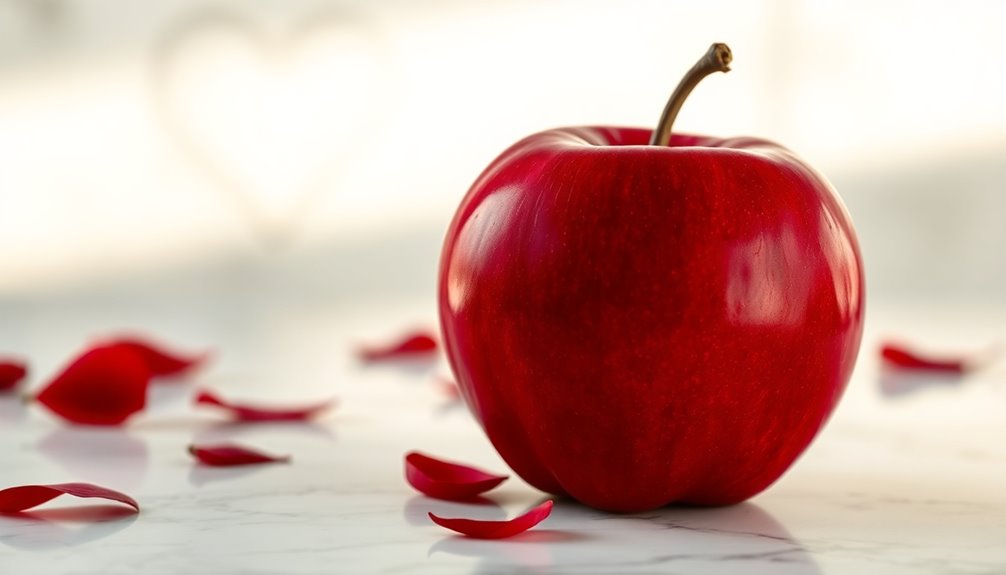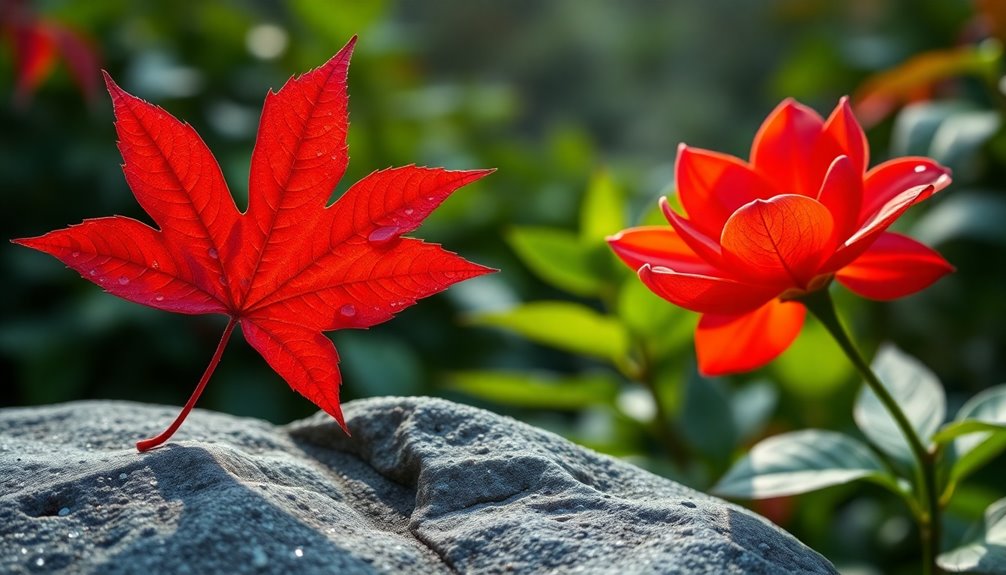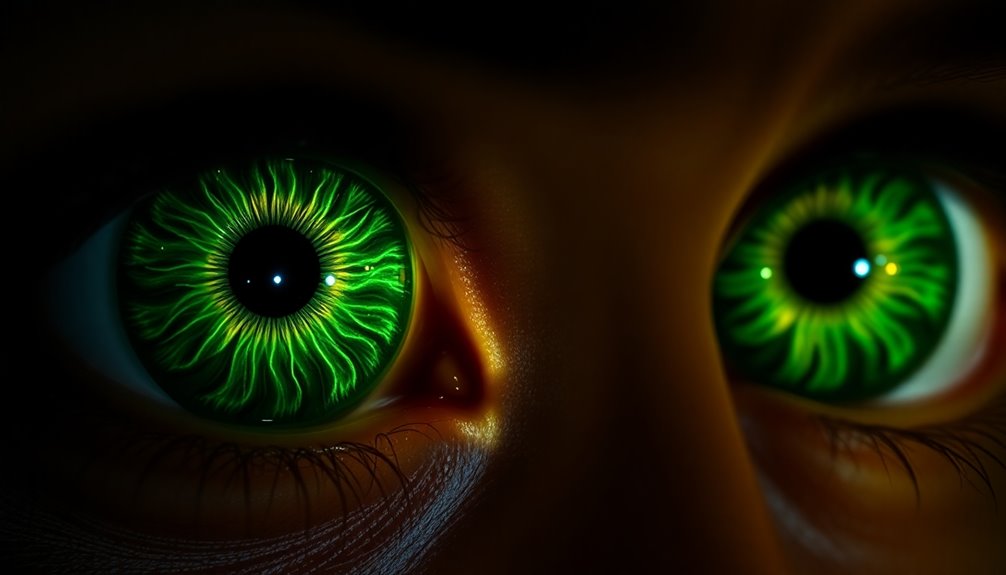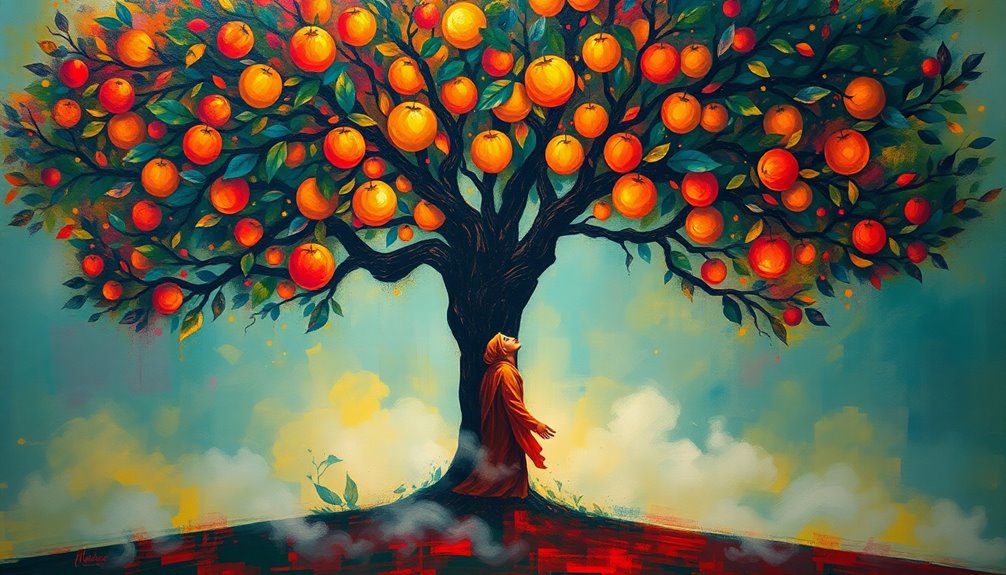Red is a vibrant color that holds many meanings and emotions. You might see red representing love and passion in gifts or flowers, while in some cultures, it symbolizes happiness and good fortune. Historically, red has indicated authority, worn by leaders throughout time. It can spark excitement and energy when you wear it, making you feel confident. Nature also loves red—think of apples, strawberries, and even the fiery sun. Artists used red to grab attention and express deep feelings. There's so much more to this fascinating color, and it's waiting for you to explore!
Key Takeaways
- Red symbolizes life and vitality, historically linked to ancient rituals and authority figures in various cultures.
- In many Asian cultures, red represents happiness, good fortune, and is prominently featured in celebrations.
- In Western cultures, red conveys strong emotions like love and passion, commonly seen in gifts and romantic contexts.
- Red is associated with excitement and energy, influencing perceptions of dominance and attractiveness in social settings.
- In nature, red signifies important biological functions, such as oxygenated blood and the role of red light in photosynthesis.
Historical Significance of Red

When you think about the color red, it's fascinating to realize its deep historical roots. Red is one of the earliest colors used by humans. You can find red ochre in cave paintings dating back to 36,000 BC!
In ancient Egypt, red symbolized life and victory. People used red pigments in religious rituals to represent sacrifice and the divine.
During the Middle Ages, red became a color of authority. Popes and Byzantine emperors wore red to show their power and importance. It also represented martyrdom in Christian art, making it even more significant.
Then came the Renaissance, a time when artists like Titian used red to grab attention and express feelings in their paintings. Red pigments helped create stunning visuals that still captivate us today.
By the 19th century, red transformed again, becoming a powerful political symbol. Socialist and communist movements adopted it, showing its connection to revolution and fighting against oppression.
Through the ages, red's symbolism has shifted but remains impactful, representing life, authority, and political change. Isn't it exciting how one color can hold so much meaning throughout history?
Psychological Effects of Red

Red's historical significance sets the stage for understanding its psychological effects. The color red stimulates strong feelings and can really change how you feel and act. It's fascinating how red can provoke different emotions, both positive and negative.
Here are some key effects of red:
- Red enhances excitement and energy, making you feel more alive.
- Red is associated with increased heart rates, sometimes leading to feelings of aggression.
- Wearing red clothing can give you a psychological edge in competitions, like sports.
- Red attire can influence how others see you, often indicating dominance or social status.
- Red can cause heightened romantic attraction, making people perceive you as more appealing.
When you think about it, red is the color that grabs attention. It can make you feel powerful or even a bit aggressive.
Whether you wear red clothing or see it around you, it's clear that red enhances your experiences. So, the next time you see red, notice how it makes you feel. Embrace the energy it brings and enjoy the emotional journey!
Cultural Symbolism of Red

Throughout history, the color red has taken on rich cultural meanings across various societies. It brings happiness and good fortune in many Asian cultures, especially during celebrations and weddings. Red represents joy and prosperity, which makes it a favorite choice for special occasions. In Western cultures, red symbolizes strong emotions like love and passion. You can see this with red roses and Valentine's Day gifts!
In the Middle Ages, red was a color of authority and power. Religious figures, such as Popes, wore red to showcase their high status. In indigenous cultures, red ochre played a key role in rituals and art, symbolizing life, liveliness, and a connection to the earth.
Here's a quick table highlighting the cultural symbolism of red:
| Culture | Symbolism | Examples |
|---|---|---|
| Asian Cultures | Happiness, Good Fortune | Weddings, Festivals |
| Western Cultures | Love, Strong Emotions | Valentine's Day, Roses |
| Indigenous Cultures | Vitality, Spirituality | Rituals, Art |
Red is truly a vibrant color with meanings that resonate deeply across cultures. Embrace the joy and significance of red in your life!
Red in Nature and Science

The color red isn't just a cultural symbol; it also plays a significant role in nature and science. You might be surprised to learn how red appears everywhere around you! It's crucial in many ways:
- Red light helps plants grow by influencing photosynthesis.
- Oxygenated blood appears red thanks to iron in hemoglobin, giving life to our bodies.
- Red meat gets its color from iron in myoglobin and hemoglobin, making it a crucial food source.
- Many fruits, like apples and strawberries, are red due to carotenoids, which attract animals and help with seed dispersal.
- Mars, known as the Red Planet, shines bright in the night sky because of its surface covered in iron oxide.
Red hues in flowers, like red roses, also contribute to biodiversity. They attract pollinators, which help plants reproduce.
This connection between red and nature is fascinating! Whether it's the sunset painting the sky or the vibrant fruits we eat, red signifies life and energy all around us.
Embracing these wonders helps us appreciate the beauty and significance of the color red in our world!
Red in Art and Fashion

Color plays an essential role in art and fashion, and red stands out as one of the most powerful hues. This vibrant color has been used since prehistoric times, with red ochre symbolizing life, liveliness, and power in various cultures.
In art, artists like Titian strategically used red to draw attention to important figures and emotions. This shows how red can evoke strong responses from viewers, making it an attractive choice.
In the world of fashion, red is often linked to confidence and allure. Studies reveal that when you wear red, people see you as more dominant and attractive. Isn't that exciting?
Fashion designers use red to create garments that make a statement, reinforcing its historical significance. For centuries, red has represented authority, seen in outfits worn by royalty and clergy.
Moreover, red's attention-grabbing qualities are why it's often used in branding and marketing. You'll spot it in logos and ads, designed to evoke excitement and inspire action.
Frequently Asked Questions
What Is the Symbolic Meaning of Red?
Red's a powerful color! It can mean many things. When you see red, you might think of love and passion, like a heart or a bouquet of roses.
In some cultures, red brings good luck and happiness, especially during celebrations.
However, it can also signal danger, like stop signs or warning lights.
What Emotion Does Red Represent?
Imagine a blazing fire, full of warmth and energy—that's how red makes you feel!
Red represents strong emotions like love, passion, and even anger. When you see red, it can pump you up and get your heart racing.
This color grabs attention, making it perfect for exciting moments. Whether it's a heart or a fiery sunset, red sparks intense feelings that connect you to those thrilling experiences in life!
What Does the Color Red Mean in the Bible?
In the Bible, red has powerful meanings! It often represents sin and sacrifice.
For example, in Isaiah, it mentions that even though your sins are as scarlet, they can be made clean. Red also symbolizes the blood of sacrifices, showing how important atonement is.
Plus, it connects to Jesus' blood, which brings salvation. Red can even represent love and passion, highlighting God's deep care for us.
Isn't that amazing?
Is Red a Symbol of Strength?
Absolutely, red's like a superhero color! It grabs your attention and makes you feel energized.
You might notice athletes wearing red often seem tougher and more confident. This color has a history of representing power, too, like in royal robes.
When you see red, it can even make your heart race! So yes, red's definitely a symbol of strength, bravery, and energy, lighting up everything around it with excitement!
Conclusion
To sum up, red is more than just a color. It's the warmth of a cozy campfire, the excitement of a birthday party, and the passion in a heartfelt hug. From ancient times to today, red has shown us joy, love, and strength. Next time you see red, think about all the powerful meanings it holds. Whether it's a bright apple or a beautiful sunset, red invites us to feel deeply and celebrate life's vibrant moments!











